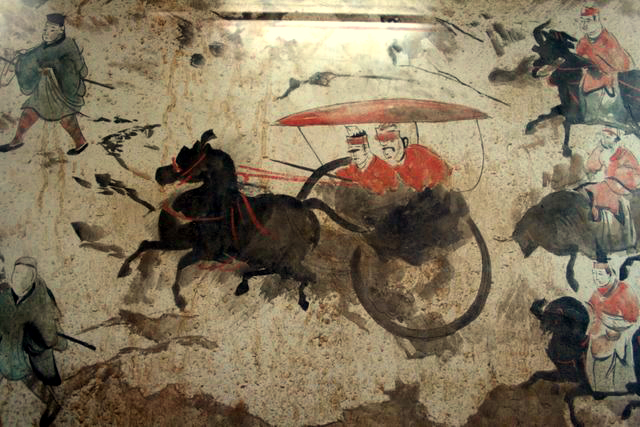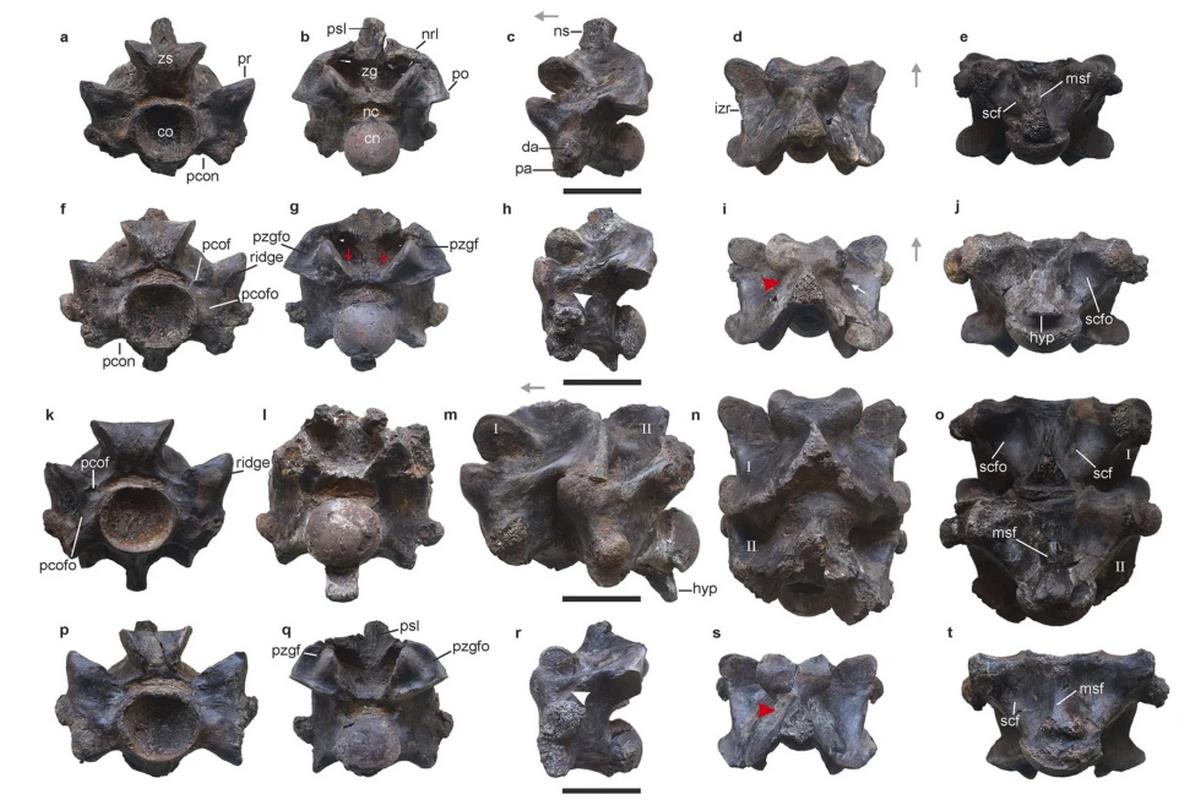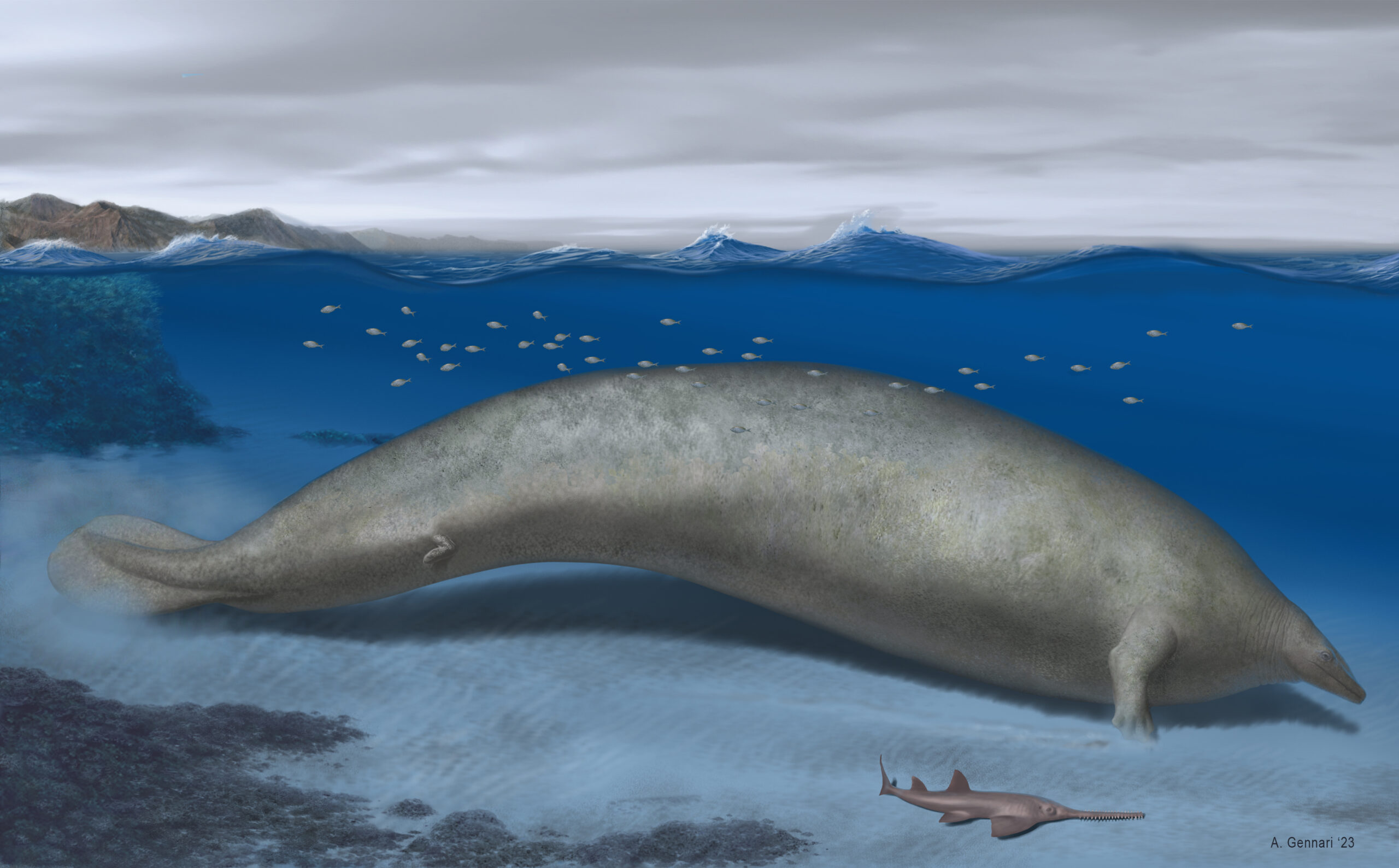PICTURED: An artists recreation of Meraxes gigas. PC: Universidad Nacional di Rio Negro. Released.
What do we know about giant predatory theropods like Tyrannosaurus Rex—they were enormous hunters and scavengers, with nose to tail lengths equaling school buses, and a body mass that was not that far off.
Now however, a new analysis of a giant predatory charcharodontosaurid called Meraxes gigas has lent substantial weight behind a particular explanation of a seemingly-unexplainable feature common to their kind: their teeny-tiny arms.
Meraxes gigas weighed between 7,046–11,753 lbs. and roamed South America during the Late Cretaceous. It may have been one of the earliest of the clade to develop before the extinction event that killed off the dinosaurs entirely, and its characteristics, scientists say, suggest the charcharodonosauridae had reached peak biological diversity.
The researchers initially discovered Meraxes, named after a fire-breathing dragon from George R. R Martin’s A Song of Ice and Fire, in Patagonia in 2012 and have spent the last several years extracting, preparing, and analyzing the specimen
Meraxes is the only Late Cretaceous carcharodontosaurid to have been found with near-completely-preserved forelimbs, as the entire class of theropods are much more poorly-understood with respect to tyrannosaurids.
Analysis has determined Meraxes’ tiny arm bones are about half the length of the animal’s femur bone, comparable to both later diverging tyrannosaurids and abelisaurids. Between these various clades are almost all large theropods known to science, of widely varying sizes and lengths.
This remarkable degree of trait convergence provides evidence that forelimb reduction was actively selected for in multiple lineages of large predatory theropods that evolved independently of each other.
PICTURED: Mounted skeleton of an Abelisaurid on display. Abelisauridae broke away from Meraxes tens millions of years before, yet they retain extremely similar forelimb to hindlimb seize ratios. PC: Kabacchi. CC 2.0.
Arms for brains
The diminutive arms of these three clades of giant theropod dinosaurs have been subject to varied hypotheses. There are paleontologists who believe they are, in fact, vestigial, meaning they evolved to fulfil a purpose that was then later evolutionarily circumnavigated, leaving them useless.
Others have proposed they served reproductive purposes, predatory, or social functions. A third theory posits that they were in a sense a victim of macroevolution, perhaps as a result of selection for other traits.
According to a Minnesota-Argentine research team examining the Meraxes gigas, their findings that three evolutionarily disparate clades of large theropods all developed tiny forelimbs independently of each other lends credence to the third theory.
“What we’re suggesting is that there’s a different take on this,” said Peter Makovicky, one of the principal authors of the study and a professor in the University of Minnesota.
“We shouldn’t worry so much about what the arms are being used for, because the arms are actually being reduced as a consequence of the skulls becoming massive. Whatever the arms may or may not have been used for, they’re taking on a secondary function since the skull is being optimized to handle larger prey”.
As skull sizes, and thusly jaw sizes, expanded throughout the theropod lineage, grabbing onto prey species with their forelimbs likely became less and less necessary, and like a paraplegic who doesn’t use his legs anymore, they became less developed, as animals born with larger heads proved more and more successful.
“The presence of multi-ton theropods with long forelimbs, but small skulls, such as the ornithomimosaur Deinocheirus and the caenagnathid Gigantoraptor, further confirms that forelimb reduction is not a simple function of body size in theropods,” the authors write, reinforcing their idea.
They also detail how their forelimbs were actually very strong and robust, suggesting there would have been an important use for them once upon a time, and that, in a minor conclusion, there seemed to be a limit, at about the ratio shared by the three theropod clades, to how much evolution could shrink the animals’ arms in comparison to their legs; suggesting they wouldn’t have gotten any smaller had the meteor impact not ended their existence.



